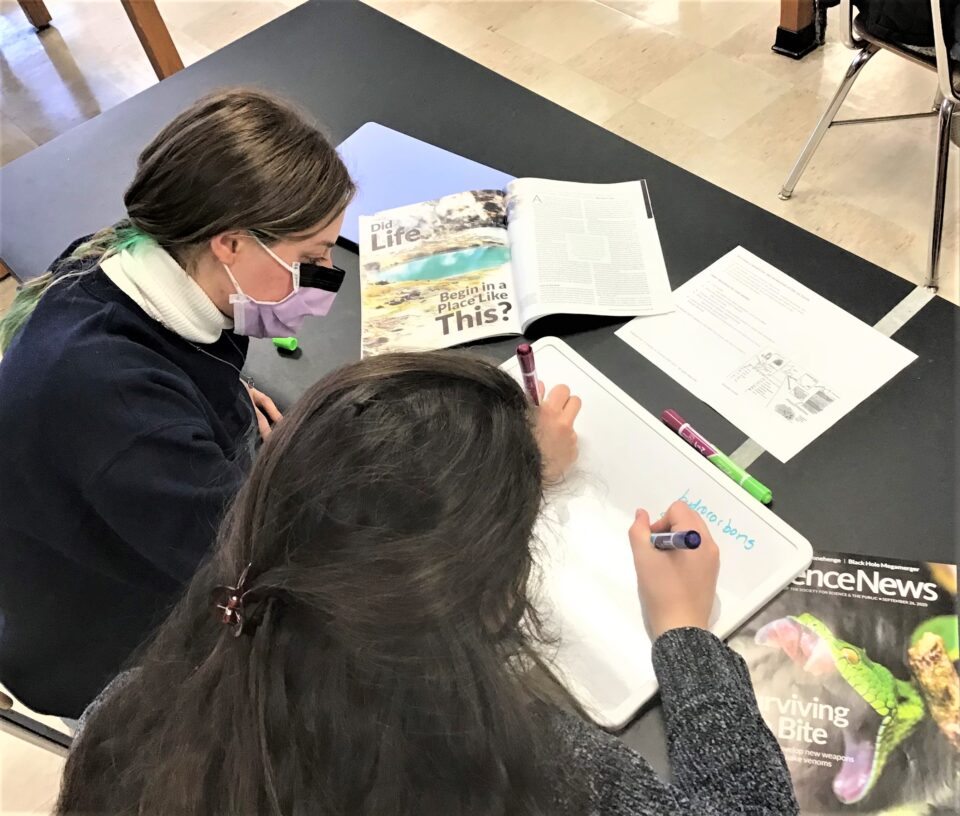Science News Learning, STEM Outreach
How 8 teachers use Science News in High Schools in their classrooms

More than 17,000 educators and an estimated 5 million students have access to Science News in High Schools (SNHS), a Society for Science program that brings reliable and trustworthy STEM journalism into the classroom. The program provides teachers print copies of the magazine, online access for their students and digital lesson plans called Educator Guides to accompany select stories in Science News. Since the material is wholly sponsor-supported, public schools have access at no cost.
Recently, the Society filmed a series of webinars highlighting eight teachers’ experiences with SNHS and how they effectively integrate the publication into their classroom curricula and lesson plans. The full series can be found here: https://www.societyforscience.org/outreach-and-equity/science-news-in-high-schools/ (scroll down). Throughout the series, the educators shared how they used Science News in creative and fun ways to engage their students, hoping to give fellow educators firsthand insights into how they could do the same.
Brian Dempsey from Acton-Boxborough Regional High School in Acton, Massachusetts encourages his students to conduct research using Science News’ archives, which spans 100 years. Linda Singley, a teacher from Greencastle, Pennsylvania, and Brian both pointed out that they value how Science News includes source material information at the end of every article. Diving into the sources helps their students take their research further. Linda also said she occasionally reaches out to cited authors to learn more about their work.
Jill Levasseur, a teacher at Bacon Academy, a public high school in Colchester, Connecticut, combines her own lesson plans with lessons included in the SNHS digital educator guide. Check out her webinar to learn more about how she creatively used one specific lesson plan, an activity that helped her biology students explore how life formed on Earth. Brianna James from Belgrade, Montana, meanwhile, teaches data visualization by directing her students to create infographics based on an article they have read. She also has her students read articles, write questions about those articles and then swap the questions with a partner.
Karisa Boyer, from Joplin High School in Joplin, Missouri, teaches a research class and recommends that her students use Science News to identify topics for their research projects. Karisa further shared that Science News enhances the things she’s already teaching, helping her find new ways to pull in the latest scientific discoveries to draw her students into science and engineering fields.
Edwina Kinchington, from Pittsburgh Science and Technology Academy, explained that she valued the resources offered by Science News for Students, including Explainers (short articles explaining basic concepts) and the publication’s COVID-19 resources. Among other things, Stephanie Jones, a teacher at Maynard Holbrook Jackson High School in Atlanta, uses Science News to teach science literacy, whether that means learning vocabulary or improving science communication skills. Pradip Misra, a teacher at Bagdad High School in Bagdad, Arizona, said he also uses Science News for Students to help increase his students’ vocabulary, citing that the Scientists Say weekly word is a useful resource. Beyond that, Pradip explained that SNHS helps to fill in the gaps, providing information that the textbooks don’t cover.
EPISODE ONE:
Brian Dempsey, biology teacher, Acton-Boxborough Regional High School, Acton Mass.
Jill Levasseur, biology and environmental science teacher, Bacon Academy, Colchester, Conn.
EPISODE TWO:
Karisa Boyer, biology teacher, Joplin High school, Joplin, Mo.
Brianna James, biology, physics, earth/space Science teacher, Belgrade High School, Belgrade, Mont.
Edwina Kinchington, biology and chemistry teacher, Pittsburgh Science and Technology Academy, Pittsburgh, Penn.
EPISODE THREE:
Stephanie Jones, biology, chemistry, environmental science teacher, Maynard H. Jackson High School, Atlanta, Ga.
Pradip Misra, biology, chemistry, physics and earth/space science teacher, Bagdad High School, Bagdad, Ariz.
Linda Singley, chemistry, physics and earth/space science teacher, Greencastle-Antrim High School, Greencastle, Penn.


